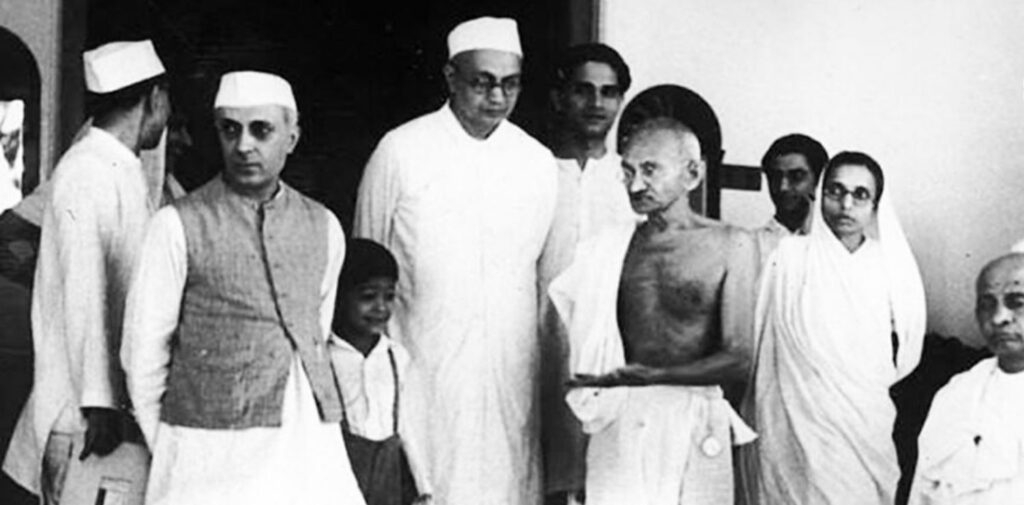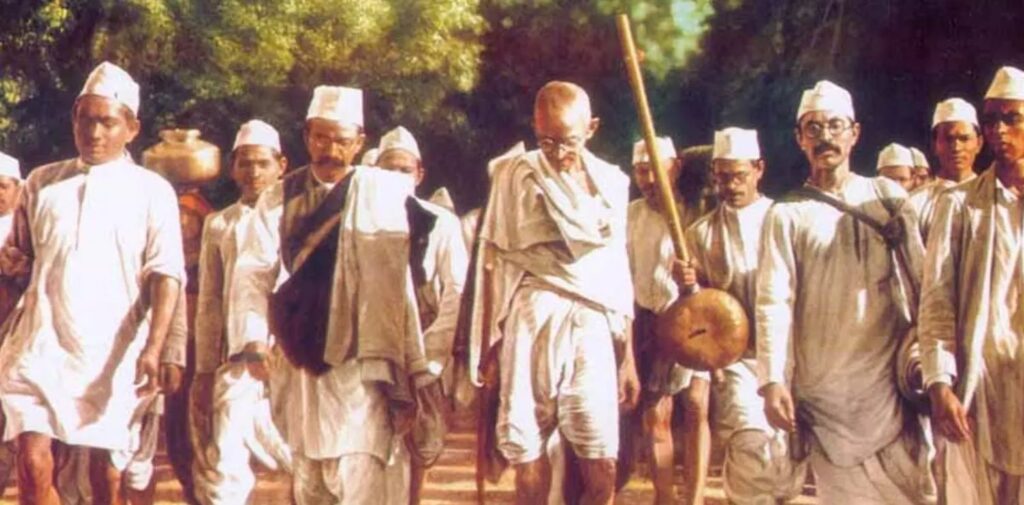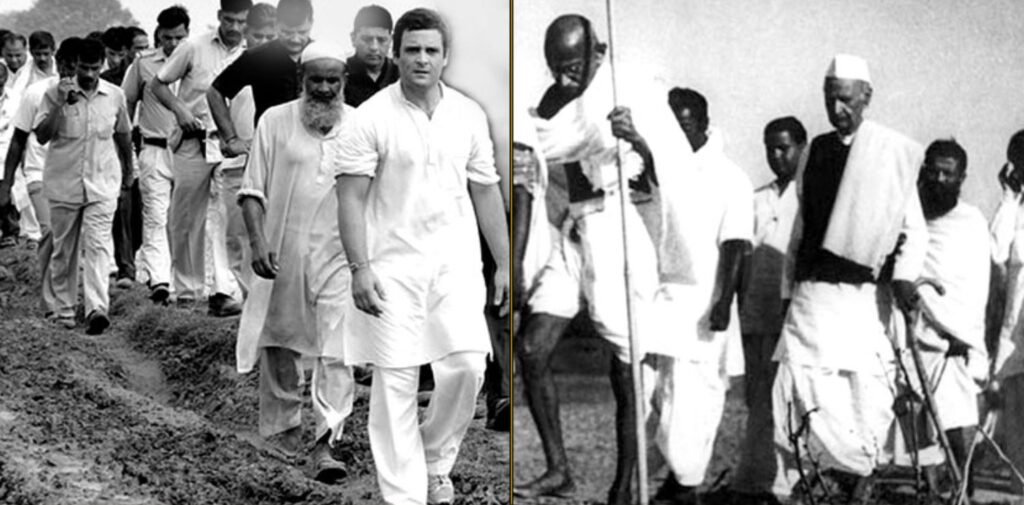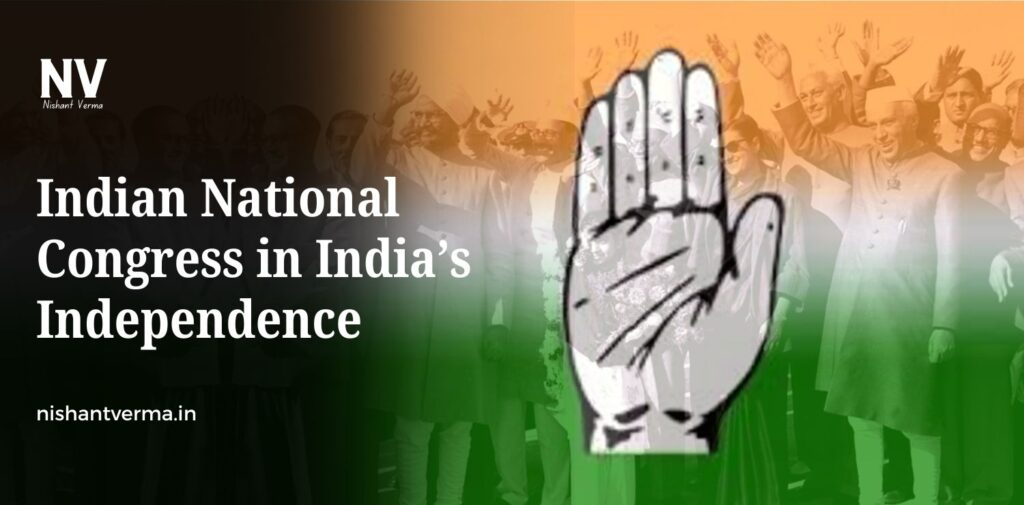The Indian National Congress (INC) played an essential role in India’s fight for independence from British colonial rule. Founded in 1885, the Congress initially began as a platform for discussing and addressing the concerns of the Indian people, but over time it evolved into the central organization leading the struggle for India’s freedom. The INC became the primary political force that united Indians from different backgrounds, ideologies, and regions under a common goal: to gain independence from British rule.
This article explores the evolution of the Indian National Congress, its role in the independence movement, and how its leaders, strategies, and policies contributed to the eventual success of India’s fight for freedom.
Early Years of the Indian National Congress
The Indian National Congress was established in 1885 by Allan Octavian Hume, a retired British civil servant, with the goal of providing a platform for Indian elites to voice their concerns. During its early years, the Congress was relatively moderate in its approach, seeking to reform the British rule rather than demanding complete independence. The focus was on issues such as greater Indian representation in government, educational reforms, and improvements in economic conditions for Indians.
In its initial years, the INC was largely composed of educated Indians, many of whom were in favor of gradual reforms rather than immediate independence. Leaders like Dadabhai Naoroji, Gopal Krishna Gokhale, and Surendranath Banerjee emphasized dialogue with the British government to achieve reforms within the existing framework of British colonial rule.
However, by the early 20th century, there was growing dissatisfaction with the pace of reforms and the limited influence of Indians in the British administration. This led to a shift in the INC’s approach, which began to adopt more radical methods and demand greater political rights for Indians.

The INC in the Early 20th Century
As the 20th century progressed, the Indian National Congress became increasingly involved in the struggle for self-rule. The first major turning point came in 1905 with the Partition of Bengal, which was an attempt by the British to divide and weaken Indian society along religious lines. The INC strongly opposed the partition, and this marked the beginning of a more radical phase of Indian politics.
In 1906, the Congress shifted its stance with the adoption of the Surat Session. The INC began to demand greater autonomy for Indians, which was met with stiff resistance from the British government. During this period, the INC became more organized, and regional branches started to emerge, uniting people from all parts of India.
Influence of Mahatma Gandhi and the INC’s Shift Towards Mass Mobilization
One of the most crucial developments in the INC’s role in India’s independence movement came with the entry of Mahatma Gandhi in the 1910s. Gandhi’s philosophy of non-violent civil disobedience, rooted in truth and non-violence (Satyagraha), transformed the INC from a political organization that represented elites to a mass movement that reached millions of ordinary Indians.
Gandhi’s leadership gave the INC a new direction, focusing on the participation of ordinary Indians, including peasants, workers, and women. He led several important movements, starting with the Champaran Satyagraha in 1917, which addressed the plight of indigo farmers in Bihar. This was followed by the Kheda Satyagraha and the Non-Cooperation Movement in 1920, which were pivotal in bringing large sections of the population into the freedom struggle.
The Non-Cooperation Movement (1920-1922) marked a significant shift in India’s approach to independence. Gandhi called for a boycott of British goods, institutions, and services, including schools, courts, and the civil services. This movement inspired millions of Indians to take part in protests, strikes, and marches. It was the first time that such a wide section of society became actively involved in the struggle for independence.
Though the Non-Cooperation Movement was suspended after the Chauri Chaura incident in 1922, Gandhi’s leadership had firmly established the INC as the principal force leading the Indian independence movement. The INC now represented the aspirations of the masses, not just a few elites.

The Salt March and the Civil Disobedience Movement
In 1930, Gandhi launched the Salt March, also known as the Dandi March, to protest the British monopoly on salt production. The Salt March was a symbolic and non-violent form of resistance that captured the imagination of Indians across the country. Gandhi’s 240-mile march to the coastal town of Dandi, where he made salt by evaporating seawater, directly challenged British laws.
The Civil Disobedience Movement that followed the Salt March marked another high point in the INC’s struggle against British rule. Thousands of Indians, inspired by Gandhi, defied British laws, boycotted foreign goods, and engaged in protests and strikes. The British responded with harsh repression, arresting thousands of leaders, including Gandhi himself, but the movement had successfully mobilized the masses and exposed the weakness of British colonial rule.
The INC’s role during this period was pivotal. The movement had united people from all sections of society, including workers, peasants, and women, in common cause against British colonialism. Gandhi’s leadership had successfully demonstrated that non-violent resistance could be a powerful tool in the fight for independence.
The Quit India Movement: A Final Push for Independence
By the 1940s, the British were facing increasing pressure due to World War II, which had drained their resources. In 1942, the Indian National Congress launched the Quit India Movement, demanding an immediate end to British rule. The movement was a response to the failure of the Cripps Mission, which had offered India limited self-government in return for support in the war effort.
The Quit India Movement was a full-scale call for mass civil disobedience, and it was backed by the INC’s leadership. Gandhi, Nehru, and other leaders of the Congress were arrested, but the movement continued to gain momentum in various parts of the country. The movement was marked by widespread protests, strikes, and acts of defiance against the British authorities.
Although the Quit India Movement was suppressed by the British through arrests and violence, it was a turning point in India’s struggle for independence. The movement made it clear that the British could no longer govern India without facing significant resistance, and it pushed the cause of independence to the forefront of global attention.

The Legacy of the Indian National Congress
The Indian National Congress, through its leaders and movements, played a central role in shaping the nation’s path to independence. It united diverse people across the country and built a national consciousness that was centered on the idea of Swaraj (self-rule). The INC was able to bring together different regions, communities, and social classes under a common cause.
The INC’s efforts culminated in the achievement of Indian independence on August 15, 1947, when the country was finally freed from British colonial rule. The leadership of the Congress, from Mahatma Gandhi and Jawaharlal Nehru to Sardar Patel and others, had been critical in ensuring that the transition to independence was largely peaceful, despite the challenges of partition and communal tensions.
After independence, the INC continued to be a major political force in India. Under Nehru’s leadership, the Congress helped build the foundations of a democratic, secular, and socialist state. While the party has faced challenges and shifts in its influence over the years, its role in the struggle for independence remains a cornerstone of India’s modern history.
Conclusion
The Indian National Congress played a monumental role in India’s struggle for independence. From its early years as a platform for moderate reform to its transformation into a mass movement under the leadership of Mahatma Gandhi, the INC led the charge against British colonialism. The Congress helped bring millions of Indians into the freedom movement, giving them a sense of empowerment and unity.
Through movements like the Non-Cooperation Movement, the Civil Disobedience Movement, and the Quit India Movement, the INC demonstrated that non-violent resistance could challenge even the mightiest empire. The legacy of the Indian National Congress, with its commitment to democracy, equality, and self-rule, continues to inspire future generations of Indians.
In essence, the Indian National Congress was not just a political organization—it was the backbone of India’s independence struggle, and its contributions to the nation’s freedom are immeasurable.




